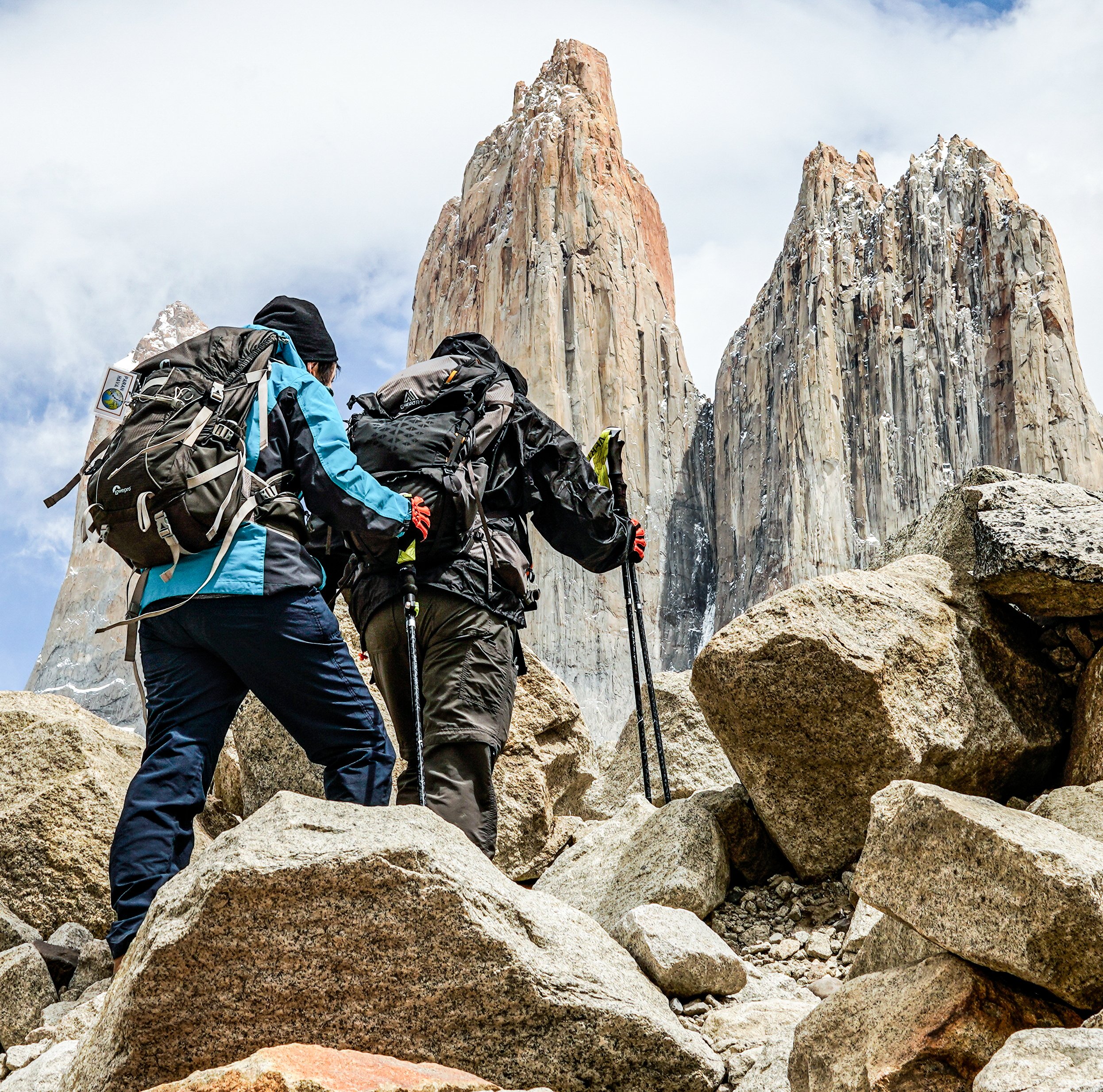Ancestral Patagonia: Following the Footsteps of the Indigenous Peoples
Patagonia is a place of profound natural wealth, with marvelous landscapes and a treasure of cultural heritage that goes back thousands of years. Here, the first inhabitants of Patagonia forged their societies and learned to survive with the diverse weather that extended across the pampas, forests, and rivers. Much of their legacy lives on to this day in different aspects; for example, the word "Paine," which gives its name to the famous massif of the area, means "blue" and comes from the language of the Aonikenk people.
We invite you on a journey through time to explore the protagonists of ancestral Patagonia. Discover the stories of the original peoples who braved the hostile Patagonian environment and traveled every corner of this impressive region. Get ready to learn more about the Selknam, the Kawésqar, the Yagans, and the Aonikenk: heroes of ancient Patagonia.
 Tehuelches or Aonikenk
Tehuelches or Aonikenk
AONIKENK: THE GIANTS OF PATAGONIA
The term "aonikenk" comes from the hispanicization of the name they gave themselves, aonek'enk, "people of the south." They were also known as Tehuelches, a concept from Mapudungun, another indigenous language in Chile, meaning "brave people" or "people of barren land."
The Aonikenk lived in bands of hunter-gatherers. They were an egalitarian society that moved on foot through the extensive territories between the Santa Cruz River and the Strait of Magellan, where they hunted guanacos, rheas, and other animals.
When the Europeans first interacted the Aonikenk, their height and corpulence caught their attention, so they baptized them as "Patagonians." The religious beliefs of the Aonikenk were more straightforward than their peers' worldviews. In their vision of the world, the Aonikenk conceived a space in which good spirits caused joy, and evil spirits caused damage and illnesses on an earthly plane.
 Kawésqar or Alacalufe
Kawésqar or Alacalufe
KAWÉSQAR: CANOER MASTERS
Kawésqar is derived from the concept of "men of skin and bones," while Alacalufe, another name by which they were known, was the term used to describe them based on their "hallef" or canoe.
These expert navigators traveled the Patagonian coasts searching for shellfish and places to hunt sea lions or huemules. They set up their camps on beaches and used frames of branches covered with wolf skin to build their huts. The Kawésqar ran in small bands and only came together on special occasions, like a beached whale or some exceptionally abundant game. Animal fat was a fundamental part of their diet, complemented also by shellfish, which the women collected.
 Yamana or Yagan
Yamana or Yagan
YAGANS: FUEGIAN NOMADS LIVING IN SMALL GROUPS
Yagán comes from the concept "we," while "yámana" comes from the term used to refer to men. The Yaganes inhabited the coastal and maritime areas of Tierra del Fuego. Closely connected to the sea, they were expert sailors and fishermen. To survive the frigid waters of the south, they developed unique skills, such as the ability to swim in cold water, and used canoes made from tree bark.
Despite the humid cold of the territories where they lived, The Yaganes' clothing exposed a large part of their body. The explanation behind this apparent paradox lies in their method of preventing moisture saturation, which accelerates the loss of body heat. This practice allowed ventilation to the skin where heat loss is minimal.
 Selknam or Ona
Selknam or Ona
SELKNAMS AND THEIR TRADITIONAL BODY PAINTING
The word selk'nam is derived from the concept "sheq'el nam" which is translated as the "Sons of the Arm of the Earth," and the term Ona, a name they were also known for, comes from the Yagans, another group, and refers to their location in the north.
Perhaps one of Chile's most recognized original peoples, the Selknams are known for their traditionally painted bodies. This practice aligned with different aesthetic, social, and spiritual motivations. For them, beauty represented a privileged position and was an indicator of good health. Paint was used to highlight distinctive physical characteristics, communicate their different roles within their society, and practice rituals such as the Hain ceremony.
The males were tall, muscular, broad-shouldered, and tanned, allowing them to dedicate themselves to hunting. Women were shorter, less athletic, and devoted to childcare and housework. The Selknams were the largest group of people that inhabited Tierra del Fuego.

Ancestral Patagonia: Following the Footsteps of the Indigenous PeoplesLearn more about the ancestral history of Patagonia, and discover more secrets of the Selknam, Kawésqar, Yaganes, and Aonikenk beyond what you know today. You will see how their legacy is still alive in our culture. Connect with the essence of ancient Patagonia and be inspired by its adaptability and resilience. Ready for a unique trip back in time?
Subscribe to our newsletter to receive more content like this.




